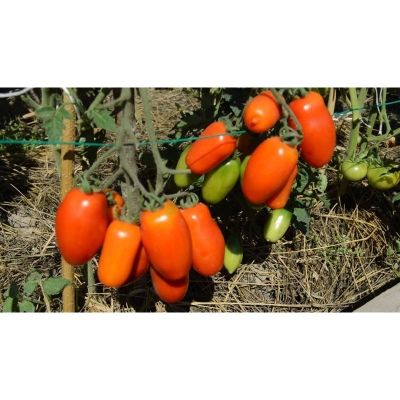
- Category: grade
- Growth type: determinant
- Appointment: universal
- Ripening period: early
- Ripening time, days: from planting seedlings to harvesting 65-68
- Growing conditions: for open ground, for film greenhouses
- Transportability: Yes
- Bush size: undersized
- Bush height, cm: up to 50-60
- Ripe fruit color: Red
There are varieties of tomatoes that differ from many others in appearance, so they are immediately remembered. This is exactly what Kibitz is. Unfortunately, the variety was not included in the state register. However, it is happily grown in orchards and vegetable gardens, collecting seed from ripe fruits, because Kibits is not a hybrid.
Breeding history
Since Kibitz was not included in the register of breeding achievements, the absolutely exact pedigree of the culture is unknown to the circle of gardeners. There are only uncertain assumptions about the origin of the variety: some consider it a variety of Ukrainian or Polish selection. In this regard, manufacturers do not distribute seeds, therefore they purchase them mainly from collectors and amateurs. Then they grow themselves.
Description of the variety
Kibits is a determinant variety, respectively, low, grows up to 50-60 centimeters, sometimes up to 80 (in greenhouses). At the same time, the bushes are distinguished by their power and strength. A moderate number of shoots are formed on them, but the foliage is not bad. Leaves are ordinary, dark green, medium in size.
Inflorescences begin to form already above 5 or 6 leaves. The stalks are articulated. And fruit clusters include several fruit ovaries at once - from 5 to 7.
The main qualities of the fruit
The shape of the Kibitsa tomatoes is very easy to recognize - they are plum-shaped neat fruits. The size of the berries is not too large, within 55-65 grams. The main difference of the variety is a sharp nose that appears during ripening at the top of the berry. The fruit that has just begun to pour will be light green, there is also a spot at the base, but it is a little blurry. But when the tomato ripens, it turns red or red-orange. Fruits have not very large seed chambers with 2 nests. There are few seeds inside.
Taste characteristics
Kibitz tomatoes have a juicy fleshy flesh, it is quite dense, and sugary places are visible on the break. The aroma is pronounced. An early, fresh crop of tasty sweet tomatoes will be a good source of vitamins. More often, beautiful tomatoes are used whole for canning, and vegetables can be dried and dried.
Ripening and fruiting
The tomato variety in question is early maturing. The ripeness of tomatoes occurs in 65-68 days from the moment the seedlings were planted in the garden. The plant also differs in that its fruiting period is extended. It continues for another 2-3 months after the first red fruits ripen.
Yield
As a rule, the entire low bush is simply strewn with even plum tomatoes, which looks very beautiful. Therefore, the yield can be considered high. It is noted that up to 3.5 kg of berries can be removed from one plant.
The timing of planting seedlings and planting in the ground
The Kibitz variety is cultivated using seedling technology. The seeds are immersed in the soil mixture at the end of March, and the already grown seedlings are planted in a permanent place after 50-60 days.

Growing tomato seedlings is an extremely important process, because it largely depends on whether the gardener will be able to harvest at all. All aspects must be taken into account, from seedbed preparation to planting in the ground.
Landing scheme
Since the bushes are compact, the planting density can be quite high. On average, 5 to 9 plants are planted on an area of 1 m2. However, experts do not recommend planting too thick in order to avoid late blight.

Growing and care
The culture as a whole is undemanding, unpretentious to the soil. But in order to grow a decent harvest, the soil for planting should be chosen fertile, light. Loamy will do.
Care consists in performing a few simple activities. The bushes of the variety in question do not need to be pinned or shaped. However, the plant will need top dressing, watering only with settled warm water, as well as loosening the soil. The bush should be tied up to preserve the purity and integrity of the crop. As for the formation, some gardeners recommend forming bushes and growing them in 3-4 trunks.
With an obvious lack of moisture, the fruits can crumble, fall prematurely. And also their gastronomic qualities will be significantly reduced.




A plant needs different micronutrients at each stage of growth. All fertilizers can be divided into two groups: mineral and organic. Folk remedies are often used: iodine, yeast, bird droppings, eggshells.
It is important to observe the rate and period of feeding. This also applies to folk remedies and organic fertilizers.
Disease and pest resistance
The Kibits variety is able to withstand a fairly large number of diseases, including late blight, apical and root rot. However, if the bushes are too thick, late blight can still infect the culture.



























































































